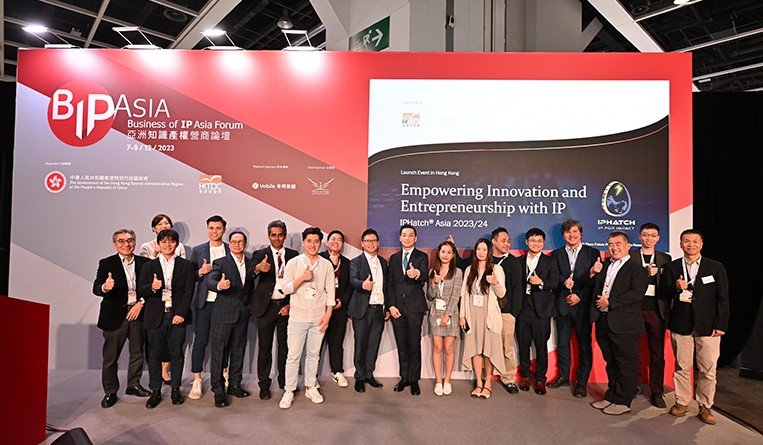BIP Asia: Experts explore policy developments and brand strategies
31 January 2024
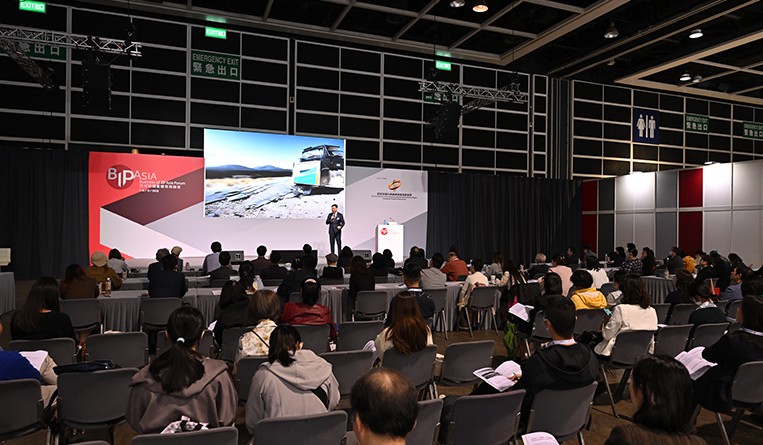
The 13th Business of IP Asia Forum in Hong Kong attracted over 140 international IP experts and business leaders. Ivy Choi shares the experts’discussions on boosting IP development, policies, and enforcement, including economic growth with IP, addressing global trends and more.
The 13th Business of IP Asia Forum (BIP Asia Forum) was held at the Hong Kong Convention and Exhibition Centre on December 7-8, 2024. Themed “IP & Innovation: Steering New Economic Growth,” the event attracted more than 140 international IP experts and business leaders to explore how IP and innovation enhance business growth and boost startup collaboration.
Government representatives and IP policymakers shared their views and strategies for driving economic growth with IP. Michael Wong, deputy financial secretary of the Hong Kong government, revealed the city’s upcoming plans to boost IP development. He said that to support science and research in Hong Kong, the government intends to double the maximum annual funding for each university’s technology transfer office to US$2 million, starting in 2024.
“We will also set up a new industrialization development office, and launch a US$1.3 billion new industrialization acceleration scheme,” Wong said. “And earlier this year our financial secretary, Paul Chan, announced plans to introduce a patent box tax incentive. And next year, we’ll introduce legislative amendments to reduce the tax rates for qualifying profits derived from patents from 16.5 percent now to just 5 percent.” Wong suggested that these initiatives will give businesses another strong reason to move their activities relating to IP to Hong Kong.
Algernon Yau, secretary for commerce and economic development of the Hong Kong government, added that the legislative amendments to introduce the patent box tax incentive will be done in the first half of 2024. This incentive aims to create a competitive tax regime for taxpayers who successfully bring their R&D outcomes to the marketplace and commercialize their patented inventions.
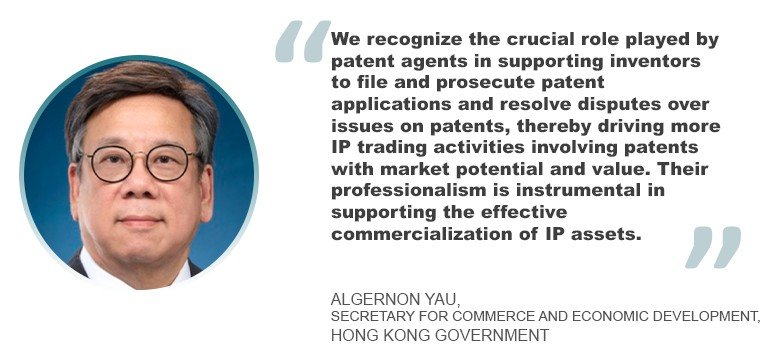
Yau also mentioned plans for introducing regulatory arrangements for local patent agent services. “We recognize the crucial role played by patent agents in supporting inventors to file and prosecute patent applications and resolve disputes over issues on patents, thereby driving more IP trading activities involving patents with market potential and value,” he said. “Their professionalism is instrumental in supporting the effective commercialization of IP assets.”
He added: “The proposed regulatory arrangements will also help enhance service quality and nurture professional talents, serving as a complementary component to support the development of the original grant patent (OGP) system. We will work with stakeholders to look into the pertinent issues involved and work out a way forward in the best interests of Hong Kong.”
Furthermore, Wong revealed Hong Kong’s plans for a copyright review that considers artificial intelligence development. Yau explained: “We are clearly aware of the enlightening, fast advancement in artificial intelligence and the need for enhanced copyright protection in this domain. We will conduct a consultation next year to get stakeholders’ views on how we may enhance copyright protection for AI-generated work to support AI technology development in Hong Kong.”
Meanwhile, Pengqi Lu, deputy commissioner of the China National Intellectual Property Administration (CNIPA), reviewed China’s IP performance in the past year. He noted a “great growth” in the number and efficiency of IP examinations. As of October 2023, mainland China reached 4.87 million valid invention patents and nearly 45.5 million valid registered trademarks.
Lu also shared the ongoing efforts to update China’s IP regulations with the upcoming announcement and enforcement of the newly amended Rules of Implementation of the Patent Law. Additionally, legislative work, such as amending the Rules of Implementation of the Trademark Law, Regulations for the Protection of Layout-Design of Integrated Circuits, and Geographical Indication Product Protection Regulation, will also be expedited.
The BIP Asia Forum brought together not only officials from China and Hong Kong, but also leaders of various international IP organizations. Daren Tang, director general of the World Intellectual Property Organization (WIPO), said: “In recent years, Asia has seen a huge growth in IP activities, becoming the world’s most powerful IP engine. Seven in 10 patent, trademark and design applications came from Asia last year, and the trend continues this year as well.”
Tang said that the geography of IP filings continues to shift and change. “Ten years ago, there were 11 million IP applications, 60 percent from Asia, Africa, and Latin America. Last year, there were over 20 million IP applications, which included patents, trademarks, and designs, and the number coming from Asia, Latin America and Africa has grown from 60 percent to 75 percent. So IP activities now are no longer just dominated by Europe and North America; in fact, it’s becoming a lot more globalized.”
Tang also noted that five Southeast and East Asian economies, including China, Hong Kong, Japan, South Korea and Singapore, have secured spots in the Top 20 of the Global Innovation Index (GII). China, in particular, emerged as the foremost filer across all IP categories, even in lesser-known domains such as plant rights protection and geographical indications.
Tang stressed that the landscape of innovation is evolving, with IP activities becoming increasingly globalized. Meanwhile, outside China, IP filings are also growing at a very strong pace. “In the last ten years, ASEAN IP filings on trademarks and designs have gone up by 300%, and by 60% for patents. Africa saw its largest patent filings in 20 years. And I think that these trends are only beginning to pick up,” he said.
Tang also emphasized positive shifts in the GII rankings for several other Asian countries this year. Notable improvements were observed in Indonesia, Mongolia, the Philippines, Thailand, Vietnam, Turkey and Mongolia.
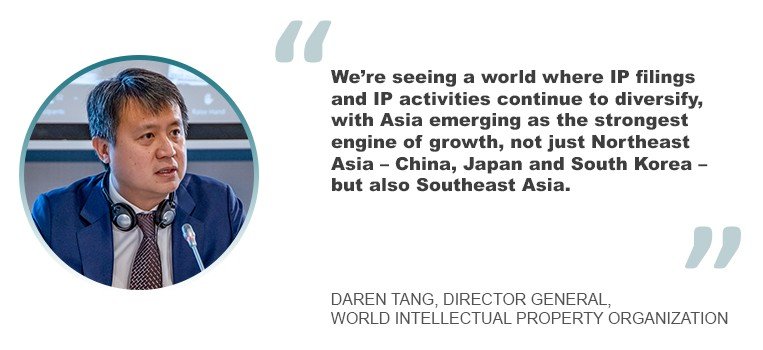
“We’re seeing a world where IP filings and IP activities continue to diversify, with Asia emerging as the strongest engine of growth, not just Northeast Asia – China, Japan and South Korea – but also Southeast Asia,” said Tang. “And India has become the sixth-largest recipient of IP filings. And for the first time in India’s history, domestic Indian innovators have surpassed 50 percent. So Indian patent filings before the Indian IP office are no longer just foreign IP coming into India because of the market, but also local Indian innovators innovating.”
Further supporting statistics were shared by Santisouk Phounesavath, chairman of the ASEAN Working Group on Intellectual Property Cooperation, who cited the GII 2023, revealing that five out of 10 ASEAN economies rank in the Top 50 positions. Singapore is ranked in the top five most innovative jurisdictions, after Switzerland, Sweden, the United States, and the United Kingdom. Malaysia ranks 30th, Vietnam ranks 40th, Thailand ranks 43rd and the Philippines ranks 50th.
Six ASEAN economies have climbed the ranks since 2022, including Brunei, Indonesia, Laos, Philippines, Singapore and Vietnam, whereas four other ASEAN economies – Indonesia, the Philippines, Thailand and Vietnam – are noted as being innovation overperformers, which means that they have performed better than expected in innovation in their respective levels of development.
Additionally, Phounesavath covered key IP policies implemented by ASEAN member states. This includes the ASEAN IP Rights Action Plan 2016-2025, a roadmap outlining strategic goals and initiatives to make ASEAN an innovative and competitive region through IP. The action plan has a completion rate of 80 percent so far, said Phounesavath.
He also highlighted the recent ASEAN-WIPO memorandum of understanding which covers four areas of focus: supporting small and medium enterprises (SMEs) and startups, leveraging digital technologies, unlocking the use of IP and intangible assets and supporting the creative industries.
Phounesavath underscored ASEAN’s focus on digital and creative economies, including the ASEAN Digital Economy Framework Agreement (DEFA), the first major region-wide digital economy agreement in the world. Phounesavath noted that ASEAN aims to promote its creative and creative industries by supporting collective management organizations (CMOs) to allow effective collective management of IP rights.
Phounesavath said that ASEAN aims to foster sustainable growth in the region using IP and innovation. They would provide support for SMEs, women, youth, and marginalized groups, focus on genetic resources, traditional knowledge, and traditional cultural expressions (GRTKTCE) initiatives, and promote IP education and IP outreach. Phounesavath remarked that Laos would take up the chairmanship of ASEAN in 2024 with the theme “Enhancing connectivity and resilience”. He said: “The strategic areas of focus will be integrating and connecting economies, forging inclusive and sustainable future, and transforming for a digital future.”
Rowel S. Barba, director general of the Intellectual Property Office of the Philippines and chair of the Intellectual Property Rights Experts Group (IPEG) of the Asia-Pacific Economic Cooperation (APEC) group of economies, shared his view on the key points in devising responsive, adaptable, and future-proofed IP policies. He said: “An IP policy provides the structure, predictability, and a beneficial environment for accessing and sharing knowledge, technology, and IP. This in turn will encourage and promote innovation and technology transfer.” He pointed out that the IP policy should be aligned with other policies and laws, while taking the changing and evolving innovation landscape into consideration to avoid becoming obsolete. “The policy should be a living document,” he said. “To this end, IP policies, laws and regulations should keep pace with technological advancements in the global environment. It is important to continually review and update the policies, laws, systems and guidelines to ensure they provide adequate protection for IP rights holders. Related to this, it is critical that we study and understand emerging and new technologies that are being developed in the wake of the ongoing digital revolution.
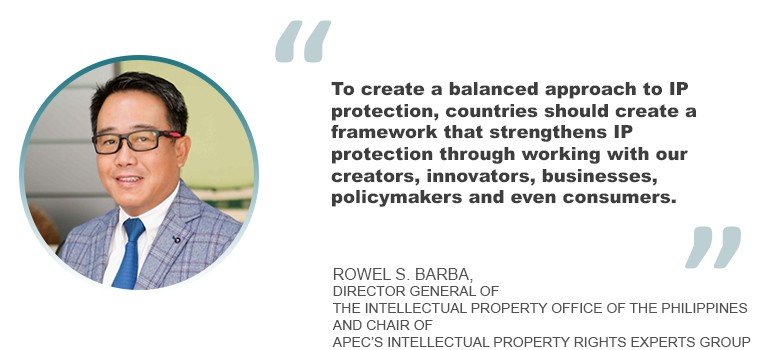
” Secondly, collaboration between stakeholders is important too. “To create a balanced approach to IP protection, countries should create a framework that strengthens IP protection through working with our creators, innovators, businesses, policymakers and even consumers.” His third point is the value of harmonization of IP systems and regulations. “It is essential to harmonize certain aspects of the IP systems and regulations across different countries through international cooperation to make it easier for IP owners to protect and enforce their intellectual property. We should also benchmark and identify best practices to ensure continuous improvement in providing services to our stakeholders.” Finally, he highlighted that effective IP awareness and education is necessary. “Relevant government agencies, private institutions and academic institutions play a vital role in the overall IP system in any country. Thus, it is important that these individuals, businesses and policymakers are educated about the role and importance of IP on national development.”
Barba shared about the initiatives that IPEG has adopted to foster innovation and IP, including the APEC-IPEG Work Plan 2023-2024. “This work plan was aimed at advancing meaningful discussions toward workable outcomes in IP financing, IP in the digital economy and interconnectivity, IP for sustainable and inclusive growth, and other cross-cutting issues.” On cross-cutting topics, Barba said: “We identified consultation sessions and dialogues with stakeholders from non-government stakeholders, international organizations, to other APEC sub-foras. The IPEG will have a list of issues and concerns that particular groups will discuss and find possible solutions and interventions as a group. If necessary, a policy dialogue among APEC economies on emerging IP issues and concerns raised by stakeholders will be conducted wherein we will come up with a policy paper.”
On IP financing, Barba said: “The IPEC will have a sharing of best practices and success stories on implementing IP financing activities. The output will be a compilation of best practices by IPEG members.” On IP in the digital economy and interconnectivity, he said: “Enforcement is one area where several members have a number of interests. We propose that a feasibility study be conducted for an APEC-wide sharing on IP enforcement. Our aim is to have an information-sharing mechanism wherein IP offices can notify each APEC economy of IP violations that can be addressed by another APEC economy. Another one will be a compilation of best practices in addressing IP violations in online marketplaces. The group will also consider pursuing a policy dialogue on the impact of emerging technologies on IP policies, such as AI, NFTs, metaverse and other disruptive technologies.” Finally, in the area of IP for sustainable and inclusive growth, Barba said: “We aim to have an in-depth discussion on how the IPEG can contribute to the Bangkok Goals in promoting bio-circular-green economy. There could also be an information exchange on how economies promote sustainable technology, as well as a stocktake on IPEG’s contribution to the La Serena roadmap on women and inclusive growth. We can also have a sharing of the best practices and initiatives in the promotion and development of the creative economy.”
Barba also shared about the challenges ASEAN is facing as it consists of different individual markets. He said: “Individual markets mean that all the local laws are involved, because IP is territorial in nature. Each ASEAN member state has its own rules, laws, and regulations, especially on IP. In terms of the size of the economy, we in the ASEAN region look up to the big economies, like the US, Japan, Korea, and China for support, in the sense that we tap their experience and resources in terms of capacity building, information sharing, and the best practices on IP. But we also continue to find ways on how we can at least harmonize our practices. As part of the ASEAN IPR Action Plan 2016-2025, we already completed the development of several common guidelines in IP examination.” Other initiatives in the Action Plan include the setting up of the ASEAN IP portal, the harmonization of certain laws by acceding in key WIPO-administered treaties, and the review of substantive examination guidelines within ASEAN. “We hope to continually find ways on how we can assist our stakeholders in the filing of their IPs in the region,” Barba said. He also suggested that following the current action plan, the organization has already started discussing the next roadmap for 2025 and beyond.
In addition to international policymakers, the forum also heard from global industry leaders, including experts dedicated to the IP protection of global luxury brands. Laurence Morel-Chevillet, IP and brand protection director of Bulgari in Rome, shared the brand’s experience using AI to create a unique artistic sensation for its consumers

Bulgari invited artists to create digital artworks inspired by its jewelry collection, which were showcased to guests wearing special sensor headsets. By capturing the guest’s emotions while viewing the Bulgari-inspired artworks, a personalized NFT was created using generative AI at the end. In such artistic projects using AI, a number of IP issues will be involved. Morel-Chevillet explained: “First of all, we ask ourselves: is our IP portfolio enough protected? Do we need to make new filings, new trademarks to protect in the metaverse because of AI?” Another issue is the ownership of creations made by AI. She advised that when deciding to work with a generative AI platform, companies should look at the terms and conditions in detail to understand how it works, such as whether they can have exclusive ownership of what is created after the inputs, and whether the platform offers unlimited license of use of the creation.

Meanwhile, Mayeul Dastugue, legal director of global IP enforcement of Christian Louboutin in Paris, discussed the issue of counterfeit products and highlighted the prevalence of fake websites in the 2010s. “Many domain names were registered every day, with fake websites uploaded every day as well,” he said. “It’s kind of a game of whack-a-mole – when you just shut one down, another appears somewhere else.”
To combat this, Christian Louboutin created “Stopfake,” a collaborative and educational website between the brand and its customers or prospective customers. It features a built-in proprietary online store checker, where customers can type the address of a website and check whether it is an authorized online store.
“Stopfake is really a collaborative project; it helps us collect lots of intelligence about what’s going on either online or offline,” explained Dastugue. “When I first joined the company, actually, most of our matters started through Stopfake reports. Today, Stopfake is really the symbol of Christian Louboutin’s zero-tolerance policy of fake goods.”
Mayank Vaid, IP director of Asia Pacific and China (Civil) of Louis Vuitton Pacific in Hong Kong, also spoke of the challenges of IP enforcement. He shared a case involving a counterfeiter from Vietnam who set up three different websites. “He kept running away from the police because he continued to engage the customers by sending them spam messages, inviting them to come to his first website. By the time the police could engage with the first website, he would immediately change the combination into the second website. He could manage to do this for a period of three months. We do not know what the estimation of profits of that infringer was, but looking at the traffic, we assume his profits were quite high. Thankfully the Vietnam police took action against these websites, took them down, seized the warehouse, and arrested the operators of the websites. It was a huge project done together with the digital team of the Vietnam police and the Ho Chi Minh City police.”

Vaid said that as a brand, key areas that the company focuses on are not only protecting consumers but also actively working with law enforcement agencies and customs to make sure that they have the right level of support and can get all the information they need. said Vaid. “For example, I’m a customs examiner for Hong Kong customs, and we have dedicated resources to make sure we are supporting the law enforcement agencies and their work. We have to be very reactive, and respond to customs in very short periods of time, especially in the Asian region. There are many countries and it’s very diverse, so we have to be able to be very quick and responsive, which means not only registering our trademarks, but also having the customs recordation in place in the right countries, and then training the customs and the police with this.”
“With ASEAN, the challenges are less compared to earlier because they have improved their capacity, thanks to the initiatives of many governments with whom we work,” Vaid said. “It’s quite helpful that we’re able to get their buy-in, because they’re starting to understand and realize that IP is important – IP protection, IP enforcement, and IP environment is extremely important for business and economic growth for those countries.”
